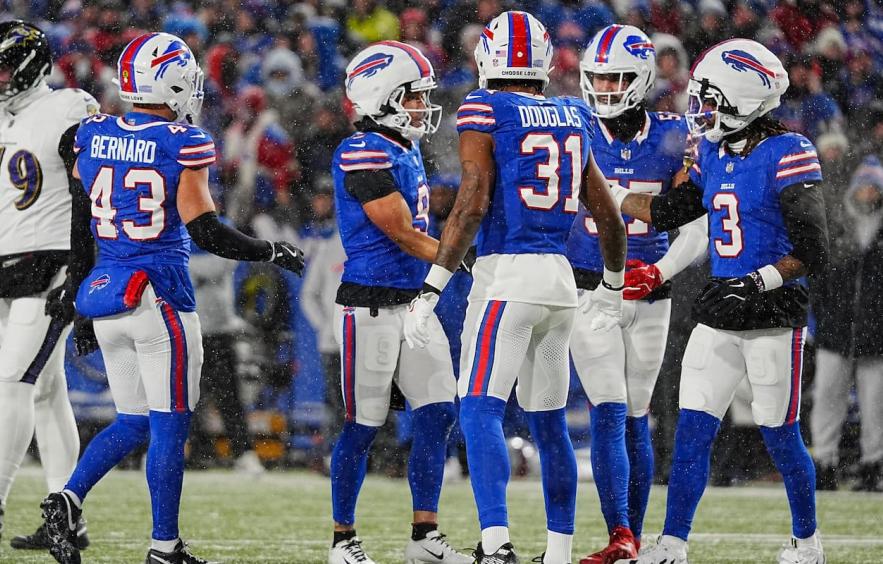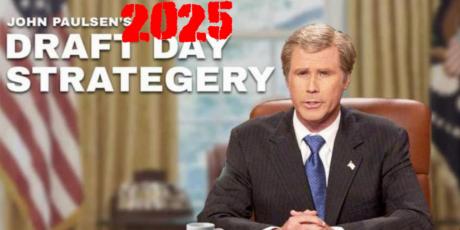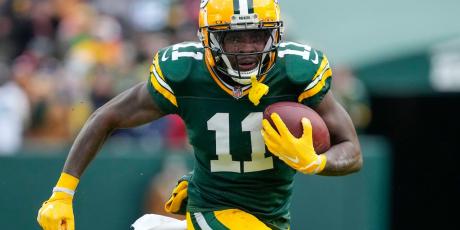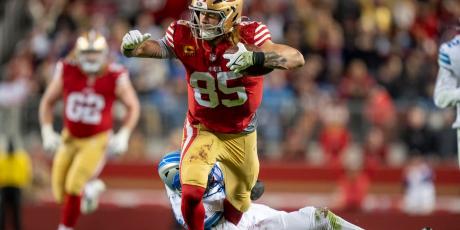Which Teams Invested in Defense in 2025?

Every offseason, once the main part of free agency is over, I compile all the defensive free agent signings to get a quantitative sense of which teams are investing in that side of the ball. One of the best measures of a player's value and ability is the contract that they sign, so I compile the Average Annual Value (AAV) for each team's free agents in (players the team signed) and free agents out (players signed away by other teams) to come up with a net dollar value for each team.
A team with a large positive number means that they brought in significantly more salary (i.e. talent) than they lost, and, if they spent wisely, the team should be better on that side of the ball. Conversely, a team with a large negative number means they lost significantly more talent than they brought in, and the team should be worse on defense. Caveat: Quality coaching, draft picks, and the development of younger players can offset losses in free agency.
To sum up, here are the five factors that I consider when evaluating a fantasy defense:
1. Previous year’s finish
2. Quality of coaching
3. Strength of schedule
4. Quality of offense
5. Personnel/coaching changes from the previous year
Examining defensive free agency spending (as well as high-capital draft picks) helps to quantify the fifth factor.

DraftKings is giving ALL customers a can't-miss offer for Best Ball: Draft One, Get One! Enter a lineup in the $15 Million Best Ball Contest for just $20, and you'll score another Best Ball ticket to play FREE for a share of $15 million—giving you a second shot to win big!
Last Season Overview
Last year, four teams spent a net of $19 million or more on the defensive side of the ball, and those teams saw an increase of 19% in fantasy points per game in 2024. Those teams also yielded 12% fewer (real-world) points as well.
Six of the seven teams that spent a net of $10 million or more in 2024 improved their fantasy scoring, with the lone exception being the Raiders (-44%). The six teams that improved did so by an average of 26%.
Historical Trends in Defensive Spending
Since I started tracking this data in 2016, the 80 teams that have invested a net of at least $7.0 million on defense in a given year enjoyed an average increase in fantasy scoring of 17%.
Teams that invested less than a net of $7 million or had a net decrease in defensive payroll saw a 3% decrease in fantasy scoring. (For those wondering, teams that invested $0 to $7 million saw a 1% increase in fantasy scoring, on average.)
On the flip side, the 105 teams that saw a net decrease of at least $4 million on the defensive side of the ball saw their fantasy production decline 6% on average.
Ultimately, defensive spending in free agency is not a magic bullet for evaluating fantasy defenses. Still, it is another valuable data point that can indicate defensive units poised for an increase (or decrease) in production.
2025 Defensive Spending
Below is a table of the 2025 net free agency investment by each team. I also included the number of draft picks used in the first three rounds on defensive players to see which teams were using significant draft capital to shore up that side of the ball.
| Team | Net # In | Net $ In | Rank | Drafted In First Three Rounds | Net Players In |
|---|---|---|---|---|---|
| NE | 6 | $69,175,000 | 1 | - | 6 |
| NYG | 3 | $41,332,500 | 2 | 2 | 5 |
| CAR | -1 | $38,361,667 | 3 | 2 | 1 |
| ARI | 2 | $38,080,000 | 4 | 3 | 5 |
| BUF | 5 | $30,634,235 | 5 | 3 | 8 |
| CHI | -1 | $21,272,500 | 6 | 1 | 0 |
| MIN | 2 | $19,082,500 | 7 | - | 2 |
| IND | 2 | $15,645,000 | 8 | 2 | 4 |
| DEN | 0 | $13,332,500 | 9 | 2 | 2 |
| HOU | 2 | $9,467,500 | 10 | 1 | 3 |
| TB | -2 | $6,230,000 | 11 | 2 | 0 |
| ATL | 1 | $4,602,500 | 12 | 3 | 4 |
| PIT | 1 | $4,400,765 | 13 | 1 | 2 |
| JAX | -3 | $4,175,000 | 14 | 2 | -1 |
| TEN | 1 | $3,050,000 | 15 | - | 1 |
| DET | 3 | $2,440,000 | 16 | 1 | 4 |
| CLE | 2 | -$510,000 | 17 | 2 | 4 |
| GB | -2 | -$1,150,000 | 18 | - | -2 |
| CIN | -1 | -$1,940,000 | 19 | 2 | 1 |
| SEA | -2 | -$3,979,167 | 20 | 1 | -1 |
| WAS | 0 | -$6,166,500 | 21 | - | 0 |
| LAR | -4 | -$9,907,500 | 22 | 1 | -3 |
| NO | -1 | -$10,312,500 | 23 | 2 | 1 |
| KC | -1 | -$15,661,667 | 24 | 3 | 2 |
| DAL | -1 | -$16,238,333 | 25 | 2 | 1 |
| MIA | 0 | -$18,912,500 | 26 | 1 | 1 |
| BAL | -2 | -$21,565,000 | 27 | 2 | 0 |
| LAC | -1 | -$23,465,000 | 28 | 1 | 0 |
| NYJ | -2 | -$30,034,500 | 29 | 1 | -1 |
| LV | -1 | -$33,091,500 | 30 | 1 | 0 |
| PHI | -1 | -$55,370,000 | 31 | 2 | 1 |
| SF | -4 | -$72,977,500 | 32 | 4 | 0 |
A Few Takeaways
- Since I began tracking this data in 2016, no team has spent more than the Patriots (+$69.2M) did this offseason. They added defensive tackle Milton Williams, cornerback Carlton Davis, and linebackers Harold Landry and Robert Spillane. The next closest spender was the 2020 Dolphins (+$53.8M), and they increased their fantasy scoring from 4.7 to 9.5 per game (+102%). The 12 teams that spent at least $20M net on the defensive side of the ball saw an average increase of 21% in fantasy scoring. Under Bill Belichick, the Patriots were a perennially solid fantasy defense, but that has changed in recent years. It’s clear with these investments that new HC Mike Vrabel wants to improve the Patriots’ defense sooner rather than later. Vrabel did have three top 13 fantasy defenses during his tenure with the Titans, but his defenses have had an average fantasy ranking of 19.1 in his seven seasons as either a defensive coordinator or a head coach.
-
The 2025 Giants spent the fourth-most (+$41.3M) since I began tracking this data. They added cornerback Paulson Adebo, safety Jevon Holland, defensive end Chauncey Golston, defensive tackle Roy Robertson-Harris, and drafted defensive end Abdul Carter with the No. 3 overall pick. They also added defensive tackle Darius Alexander in the third round. The G-men were 25th in fantasy scoring last year, but this will be a very different unit this season.
-
The Panthers spent the fifth-most (+$38.4M) since 2016, adding safety Trevon Moehring, defensive tackles Tershawn Wharton and Bobby Brown, and linebacker Patrick Jones. They also added defensive ends Nic Scourton in the second round and Princely Umanmielen in the third round. Carolina had the lowest-scoring fantasy defense last season, so this is probably nothing to get excited about, but if the unit gels, they could work their way into the streaming conversation this season.
-
The Cardinals also spent $38M (+$38.1M to be exact) after finishing 19th in defensive fantasy scoring, so they are a team to monitor. They added defensive end Josh Sweat, defensive tackle Dalvin Tomlinson, linebacker Akeem Davis-Gaither, and defensive end Calais Campbell. Arizona also used three premium picks on the defensive side of the ball, adding defensive tackle Walter Nolen in the first round, cornerback Will Johnson in the second round, and defensive end Jordan Burch in the third round. With all these changes, along with solid 2024 production, I’m adding the Cardinals to my list of sleeper fantasy defenses.
-
The Bills (+$30.6M) were third in defensive fantasy scoring last season, and they were active both in free agency and in the draft. They signed linebacker Michael Hoecht, pass rusher Joey Bosa, defensive end Larry Ogunjobi, and cornerback Tre'Davious White, though they traded away Kair Elam (50th/127 in PFF coverage grade). In the draft, they took cornerback Maxwell Hairston in the first round, defensive tackle T.J. Sanders in the second round, and defensive end Landon Jackson in the third round, so clearly the defense was the priority this offseason.
-
Another mediocre defense from 2024 to consider is Chicago (+$21.3M), who added defensive end Dayo Odeyingbo and defensive tackle Grady Jarrett, and added defensive tackle Shemar Turner in the second round. The Bears were 18th in defensive fantasy scoring last season, so they could make a leap into DT1 territory, especially if the offense improves under new HC Ben Johnson. (Good fantasy defenses tend to go hand-in-hand with good/competent offenses.)
-
The Vikings (+$19.1M) had the No. 2 fantasy defense last year and signed defensive tackles Jonathan Allen and Javon Hargrave, and cornerback Isaiah Rodgers. Minnesota should once again have a top fantasy defense.
-
The Colts (+$15.6M) had the No. 20 fantasy defense last year and have typically been a good streaming option for the last several years, but not the caliber of an every-week starter. They signed safety Camryn Bynum and cornerback Charvarius Ward. They also added defensive end JT Tuimoloau and cornerback Justin Walley in the second and third rounds, respectively. The Colts should be a streaming option in 2025.
-
The Broncos (+$13.3M) were the top fantasy defense last season, and not only did they add safety Talanoa Hufanga and linebacker Dre Greelaw in free agency, they drafted cornerback Jahdae Barron in the first round and defensive end Sai’vion Jones in the third round. Denver should have a top fantasy defense again this season.
-
The 49ers lost the most salary in my offensive line study, and they lost even more (-$73.0M) on the defensive side of the ball after a No. 24 fantasy finish in 2024. It was the most salary by far that any team has lost since I started tracking this data. Charvarius Ward, Talanoa Hufanga, Dre Greenlaw, Javon Hargrave, Maliek Collins, Leonard Floyd, and Isaac Yiandom were all signed away, though the 49ers partially backfilled in the draft by taking defensive end Mykel Williams in the first round, defensive tackle Alfred Collins in the second round, linebacker Nick Martin, and cornerback Upton Stout in the third round. This unit may struggle again in 2025.
-
If not for the 49ers, the Eagles (-$55.4M) would have set a new record for salary lost in one offseason by more than $20 million. Defensive tackle Milton Williams, defensive end Josh Sweat, and cornerbacks Isaiah Rodgers and Darius Slay were all signed away. They traded away safety C.J. Gardner-Johnson (8th/104 in PFF coverage grade). Williams and Sweat were No. 1 and No. 2 in defensive free agency AAV this offseason. They drafted linebacker Jihaad Campbell in the first round and safety Andrew Mukuba in the second round. The Eagles were No. 7 in defensive fantasy scoring last year but may take a step back given the talent they lost.
-
The Raiders (-$33.1M) and the Jets (-$30.0M) have the next most salary lost, and while the Raiders are an obvious avoid, some folks think the Jets will drastically improve upon their No. 23 finish last season. I am not one of those people.























